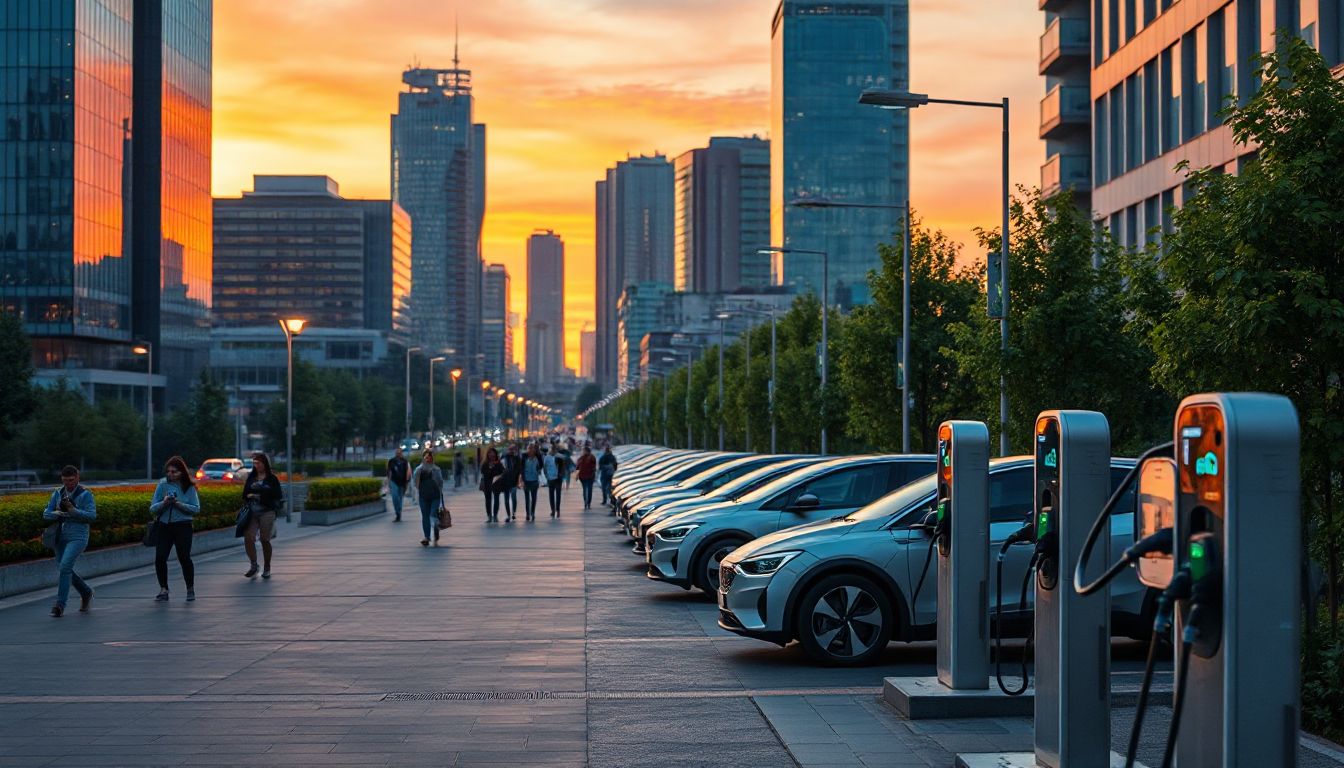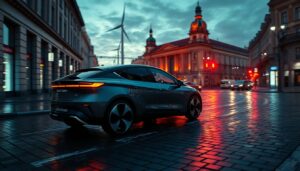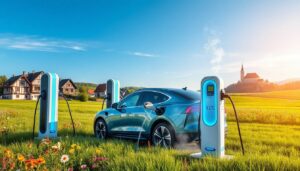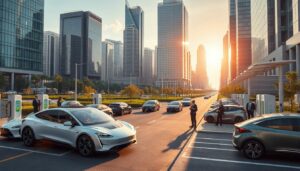Introduction
Germany is quickly becoming a leader in electric vehicle (EV) adoption. As the world moves toward cleaner transportation, German cities are aiming to cut pollution and boost modern mobility options. The country’s rich history of automotive innovation makes it a perfect place to develop electric technologies. With cities like Berlin, Munich, and Hamburg pushing forward, EVs are shaping the future of urban transport in Germany.
Germany’s Electric Vehicle Market Landscape
Current Market Size and Growth Trends
EV sales in Germany have skyrocketed in recent years. From just a few thousand in 2015, the number of electric cars sold now reaches hundreds of thousands annually. Experts expect EVs to account for nearly 70% of all new vehicle sales by 2030. The shift is clear: more Germans want electric, not gasoline-powered cars.
Leading Automakers and EV Models in Germany
Big names like Volkswagen, BMW, and Mercedes-Benz lead the charge. Volkswagen’s ID series, including the ID.3 and ID.4, has become wildly popular. BMW’s i series continues to impress with sleek design and long-range options. Mercedes-Benz’s EQ line also adds luxury to electric driving. These brands are not just selling cars—they are shaping the future of mobility.
Government Policies and Incentives
Germany’s government actively encourages EV use. Tax credits, subsidies, and reduced registration fees make buying electric more affordable. Cities are investing heavily in charging stations too. Future plans include stricter emissions laws and incentives to boost EV adoption even further.
EV Charging Infrastructure in German Cities
Urban Charging Networks and Accessibility
Charging stations are expanding fast across German cities. In Berlin, Munich, and Hamburg, the number of fast chargers doubles each year. Many stations are located close to homes, shops, and public transport hubs, making it easier to recharge on the go. This widespread access helps reduce worries about running out of battery, known as range anxiety.
Innovations in Charging Technologies
New tech makes charging faster and smarter. Smart charging can balance energy loads and reduce costs. Vehicle-to-Grid (V2G) systems allow EVs to feed energy back into the grid. Ultra-fast chargers are popping up, capable of giving an 80% charge in under 20 minutes. Home chargers and mobile options also give drivers more choices.
Challenges and Opportunities
Although progress is impressive, gaps remain—especially in rural areas. Range anxiety can still push people away from EVs. But, collaborations between government and private firms keep pushing infrastructure forward. Plus, startups working on new charging tech have big chances to grow and innovate.
Sustainability and Environmental Impact
Reduction in Urban Emissions
Since adopting EVs, many German cities have seen clear air quality improvements. Cars powered by electricity produce no tailpipe emissions, which helps cities meet climate goals. Less pollution means healthier streets and better lives for residents.
Battery Recycling and Material Sustainability
Germany is also tackling the environmental side of EVs. Recycling batteries to reuse materials like lithium and cobalt reduces waste and keeps costs lower. Several projects focus on making batteries more eco-friendly, cutting down environmental damage from mining and disposal. Researchers are also searching for sustainable battery ingredients that last longer.
Urban Air Quality Improvements
In cities like Stuttgart and Frankfurt, data shows a drop in pollution levels. Cleaner air helps reduce respiratory problems and heart disease. EVs are a big part of making urban living safer and more enjoyable.
Challenges Facing EV Adoption in Germany
Infrastructure and Range Limitations
Despite progress, rural areas still lack enough charging options. Vehicles with limited battery range can be hard to use on longer trips. Overcoming these hurdles will need more chargers and smarter battery tech.
Consumer Perceptions and Market Barriers
Some drivers worry about cost, charging speed, or the range of EVs. These doubts hold back potential buyers. Increasing awareness and offering better incentives can encourage more people to make the switch.
Economic and Industry Challenges
Supply chains face issues, especially with battery materials. Competition among automakers is fierce, pushing prices and innovation. Managing these market factors is key to keeping EV growth steady.
The Road Ahead: Future of Electric Vehicles in Germany
Policy and Industry Predictions
Germany plans to boost EV incentives and tighten emissions laws. Automakers are investing heavily in new electric models and battery technology. Expect more affordable, longer-range EVs hitting the market soon.
Technological Advancements
Batteries will get smaller, cheaper, and more efficient. Charging stations will become faster and more widespread. Renewable energy will power more chargers, making EVs even greener.
Urban Planning and Smart City Initiatives
Cities are integrating EV infrastructure into their development plans. Focus is growing on shared mobility options—bike-sharing, car-sharing, and public transit—to build more sustainable cities. Smart traffic solutions will help optimize EV use and reduce congestion.
Conclusion
Germany is at the front of the electric vehicle movement, shaping a cleaner, smarter future. With strong government support, innovative automakers, and growing infrastructure, EV adoption is gaining momentum. This shift offers huge benefits: lower emissions, healthier cities, and new economic opportunities. To keep this momentum alive, investments in charging networks, smart policies, and public awareness are vital. The future of transportation in Germany looks bright—driven by innovation and a commitment to sustainability. We all can be part of this change, whether by choosing electric or supporting eco-friendly policies. The drive toward a greener, smarter city is well underway.




